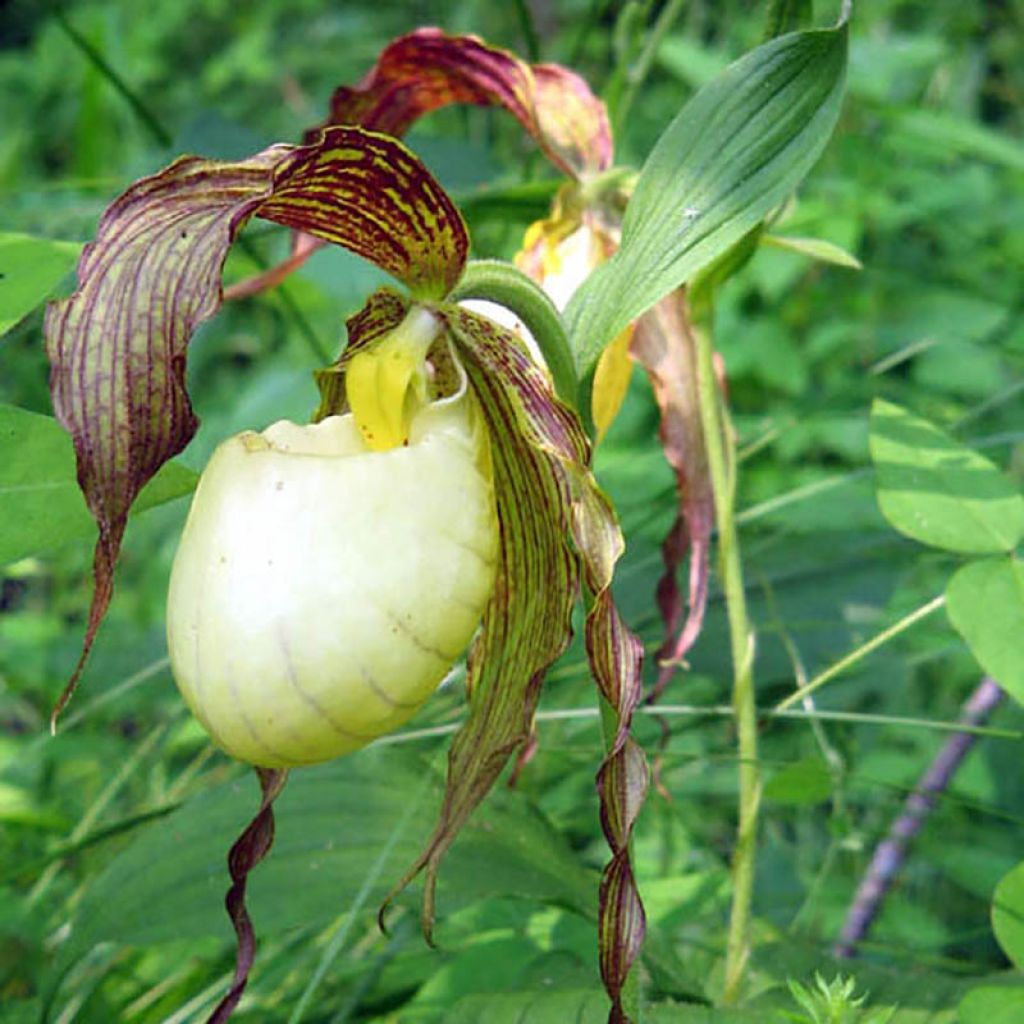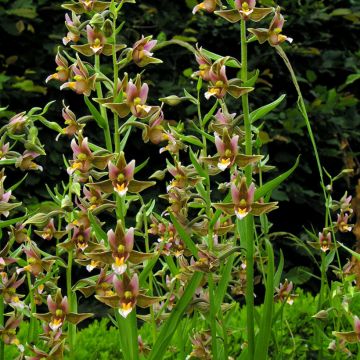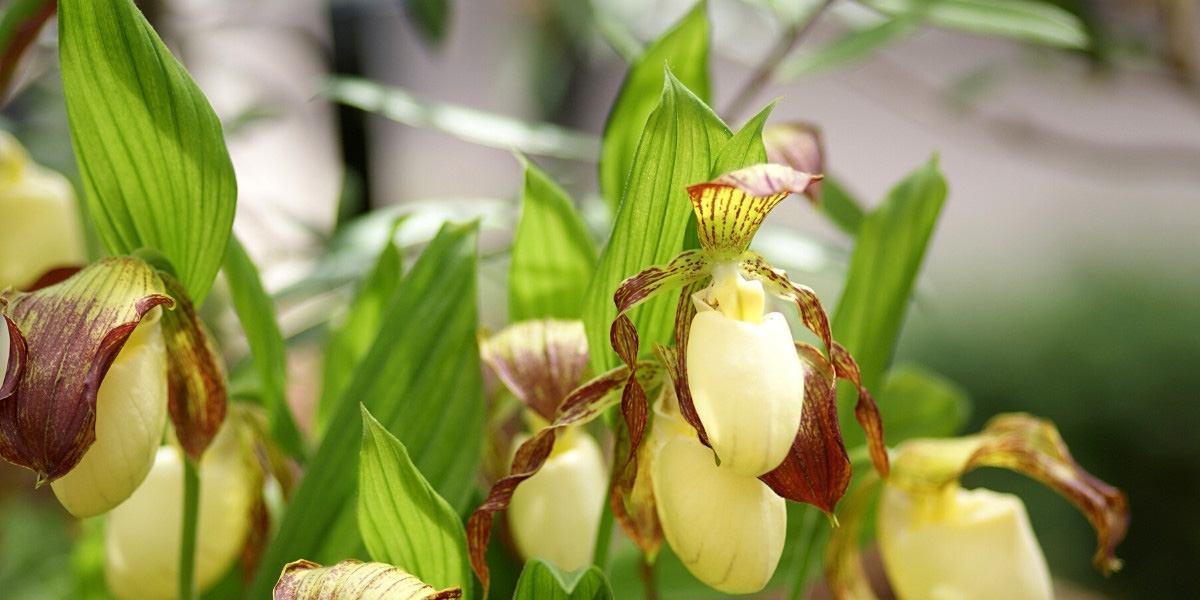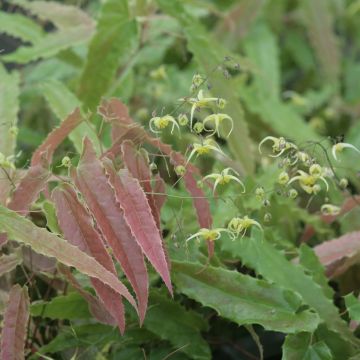

Cypripedium kentuckiense


Cypripedium kentuckiense


Cypripedium kentuckiense


Cypripedium kentuckiense


Cypripedium kentuckiense


Cypripedium kentuckiense
Cypripedium kentuckiense
Cypripedium kentuckiense
Kentucky Lady's Slipper
Special offer!
Receive a €20 voucher for any order over €90 (excluding delivery costs, credit notes, and plastic-free options)!
1- Add your favorite plants to your cart.
2- Once you have reached €90, confirm your order (you can even choose the delivery date!).
3- As soon as your order is shipped, you will receive an email containing your voucher code, valid for 3 months (90 days).
Your voucher is unique and can only be used once, for any order with a minimum value of €20, excluding delivery costs.
Can be combined with other current offers, non-divisible and non-refundable.
Why not try an alternative variety in stock?
View all →This plant carries a 12 months recovery warranty
More information
We guarantee the quality of our plants for a full growing cycle, and will replace at our expense any plant that fails to recover under normal climatic and planting conditions.

Would this plant suit my garden?
Set up your Plantfit profile →
Description
Cypripedium kentuckiense, also known as the Kentucky Lady's Slipper, is a large and beautiful botanical species native to the southern United States. This terrestrial orchid is fully hardy and tolerates hot summers well, but successful cultivation requires a good understanding of its soil requirements. Its large flowers consist of long purple petals washed with green and yellow, crowning a swollen slipper-shaped lip, white tinged with yellow. To acclimate it to the garden, provide this Lady's Slipper with a shaded or semi-shaded exposure as well as a sandy and humus-rich soil, slightly acidic, remaining slightly moist but not waterlogged.
Cypripedium kentuckiense is the Lady's Slipper with the largest flowers. They can easily reach over 12cm (5in) in diameter when not fully open. This species is found in the deep gorges of mountain ranges in the central part of the United States. It is present, discontinuously, in Tennessee, Kentucky, Missouri, Texas, and Ohio. The plant grows on acidic and greasy soils. Such soil is characterized by the presence of coarse sand, gravel, high porosity, intense biological activity, a humus cover, and the presence of clay and iron. This helps to better understand the conditions that will satisfy this orchid.
The Kentucky Lady's Slipper develops from a fleshy stump from which light green, ovate elliptical leaves emerge in early spring, 12cm (5in) long, sessile and embracing, with strongly impressed parallel veins. The stump slightly suckers, allowing it to eventually form beautiful colonies. In late spring, around May-June and for about two weeks, the plants produce beautiful hairy flower stalks, sometimes rising up to 80cm (32in) or 1m (3ft) from the ground. Each stalk bears a solitary flower. The flower is formed by slender, twisted sepals and petals, purple-brown in color, speckled with aubergine and green, and a large ventral lip ranging from ivory white to pale yellow. Each plant is generally uniflorous. The above-ground vegetation is absent in winter.
Cypripedium kentuckiense thrives on the edge of forests, in partial shade, in suitable soil. Plant it in shade, in a cool rockery, between rocks, or on the edge of a fresh understory, alongside Arisaema, Calanthe, Paris, Bletilla, and ferns. It will also thrive in a container, an unheated greenhouse, and in a non-calcareous substrate.
Handle your orchids with care when you receive them: these plants produce few roots and are delicate!
Cypripedium kentuckiense in pictures


Flowering
Foliage
Plant habit
Botanical data
Cypripedium
kentuckiense
Orchidaceae
Kentucky Lady's Slipper
North America
Other Garden Orchids
View all →Planting and care
Plant Cypripedium kentuckiense in partial shade, in a light, non-limestone, acidic soil that remains consistently slightly moist. This terrestrial orchid does not tolerate heavy, waterlogged soils or drought. Add 1/3 peat and 1/3 fine non-limestone gravel (or coarse sand or pumice) to the planting mixture, which should be mixed with topsoil and leaf compost. Water the plant without excess, ensuring that the soil remains slightly moist during summer. Protect the stump during the first year with a layer of dead leaves, 10cm (4in) thick. Cypripediums do not like fertilizers. Avoid direct sunlight, especially during the hottest hours of the day.
Planting period
Intended location
Care
Planting & care advice
This item has not been reviewed yet - be the first to leave a review about it.
Similar products
Haven't found what you were looking for?
Hardiness is the lowest winter temperature a plant can endure without suffering serious damage or even dying. However, hardiness is affected by location (a sheltered area, such as a patio), protection (winter cover) and soil type (hardiness is improved by well-drained soil).

Photo Sharing Terms & Conditions
In order to encourage gardeners to interact and share their experiences, Promesse de fleurs offers various media enabling content to be uploaded onto its Site - in particular via the ‘Photo sharing’ module.
The User agrees to refrain from:
- Posting any content that is illegal, prejudicial, insulting, racist, inciteful to hatred, revisionist, contrary to public decency, that infringes on privacy or on the privacy rights of third parties, in particular the publicity rights of persons and goods, intellectual property rights, or the right to privacy.
- Submitting content on behalf of a third party;
- Impersonate the identity of a third party and/or publish any personal information about a third party;
In general, the User undertakes to refrain from any unethical behaviour.
All Content (in particular text, comments, files, images, photos, videos, creative works, etc.), which may be subject to property or intellectual property rights, image or other private rights, shall remain the property of the User, subject to the limited rights granted by the terms of the licence granted by Promesse de fleurs as stated below. Users are at liberty to publish or not to publish such Content on the Site, notably via the ‘Photo Sharing’ facility, and accept that this Content shall be made public and freely accessible, notably on the Internet.
Users further acknowledge, undertake to have ,and guarantee that they hold all necessary rights and permissions to publish such material on the Site, in particular with regard to the legislation in force pertaining to any privacy, property, intellectual property, image, or contractual rights, or rights of any other nature. By publishing such Content on the Site, Users acknowledge accepting full liability as publishers of the Content within the meaning of the law, and grant Promesse de fleurs, free of charge, an inclusive, worldwide licence for the said Content for the entire duration of its publication, including all reproduction, representation, up/downloading, displaying, performing, transmission, and storage rights.
Users also grant permission for their name to be linked to the Content and accept that this link may not always be made available.
By engaging in posting material, Users consent to their Content becoming automatically accessible on the Internet, in particular on other sites and/or blogs and/or web pages of the Promesse de fleurs site, including in particular social pages and the Promesse de fleurs catalogue.
Users may secure the removal of entrusted content free of charge by issuing a simple request via our contact form.
The flowering period indicated on our website applies to countries and regions located in USDA zone 8 (France, the United Kingdom, Ireland, the Netherlands, etc.)
It will vary according to where you live:
- In zones 9 to 10 (Italy, Spain, Greece, etc.), flowering will occur about 2 to 4 weeks earlier.
- In zones 6 to 7 (Germany, Poland, Slovenia, and lower mountainous regions), flowering will be delayed by 2 to 3 weeks.
- In zone 5 (Central Europe, Scandinavia), blooming will be delayed by 3 to 5 weeks.
In temperate climates, pruning of spring-flowering shrubs (forsythia, spireas, etc.) should be done just after flowering.
Pruning of summer-flowering shrubs (Indian Lilac, Perovskia, etc.) can be done in winter or spring.
In cold regions as well as with frost-sensitive plants, avoid pruning too early when severe frosts may still occur.
The planting period indicated on our website applies to countries and regions located in USDA zone 8 (France, United Kingdom, Ireland, Netherlands).
It will vary according to where you live:
- In Mediterranean zones (Marseille, Madrid, Milan, etc.), autumn and winter are the best planting periods.
- In continental zones (Strasbourg, Munich, Vienna, etc.), delay planting by 2 to 3 weeks in spring and bring it forward by 2 to 4 weeks in autumn.
- In mountainous regions (the Alps, Pyrenees, Carpathians, etc.), it is best to plant in late spring (May-June) or late summer (August-September).
The harvesting period indicated on our website applies to countries and regions in USDA zone 8 (France, England, Ireland, the Netherlands).
In colder areas (Scandinavia, Poland, Austria...) fruit and vegetable harvests are likely to be delayed by 3-4 weeks.
In warmer areas (Italy, Spain, Greece, etc.), harvesting will probably take place earlier, depending on weather conditions.
The sowing periods indicated on our website apply to countries and regions within USDA Zone 8 (France, UK, Ireland, Netherlands).
In colder areas (Scandinavia, Poland, Austria...), delay any outdoor sowing by 3-4 weeks, or sow under glass.
In warmer climes (Italy, Spain, Greece, etc.), bring outdoor sowing forward by a few weeks.


































































